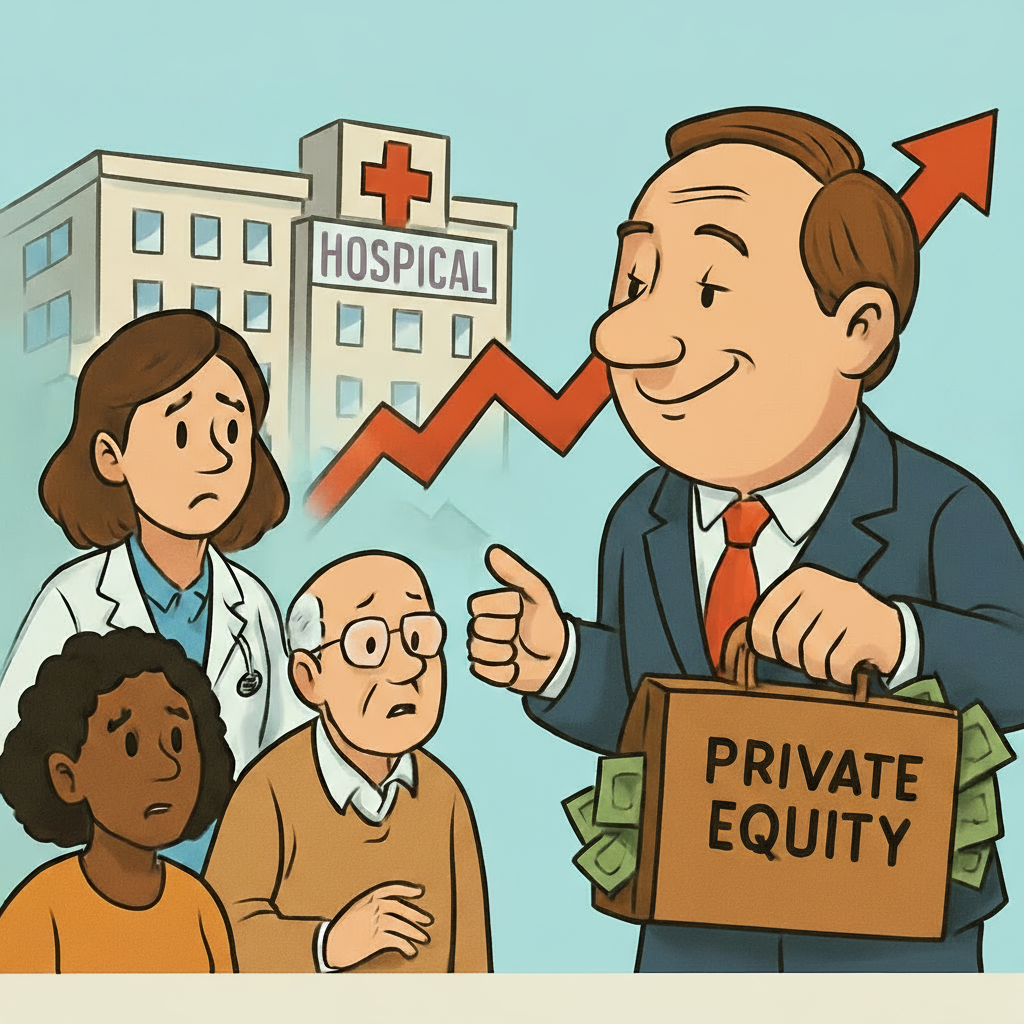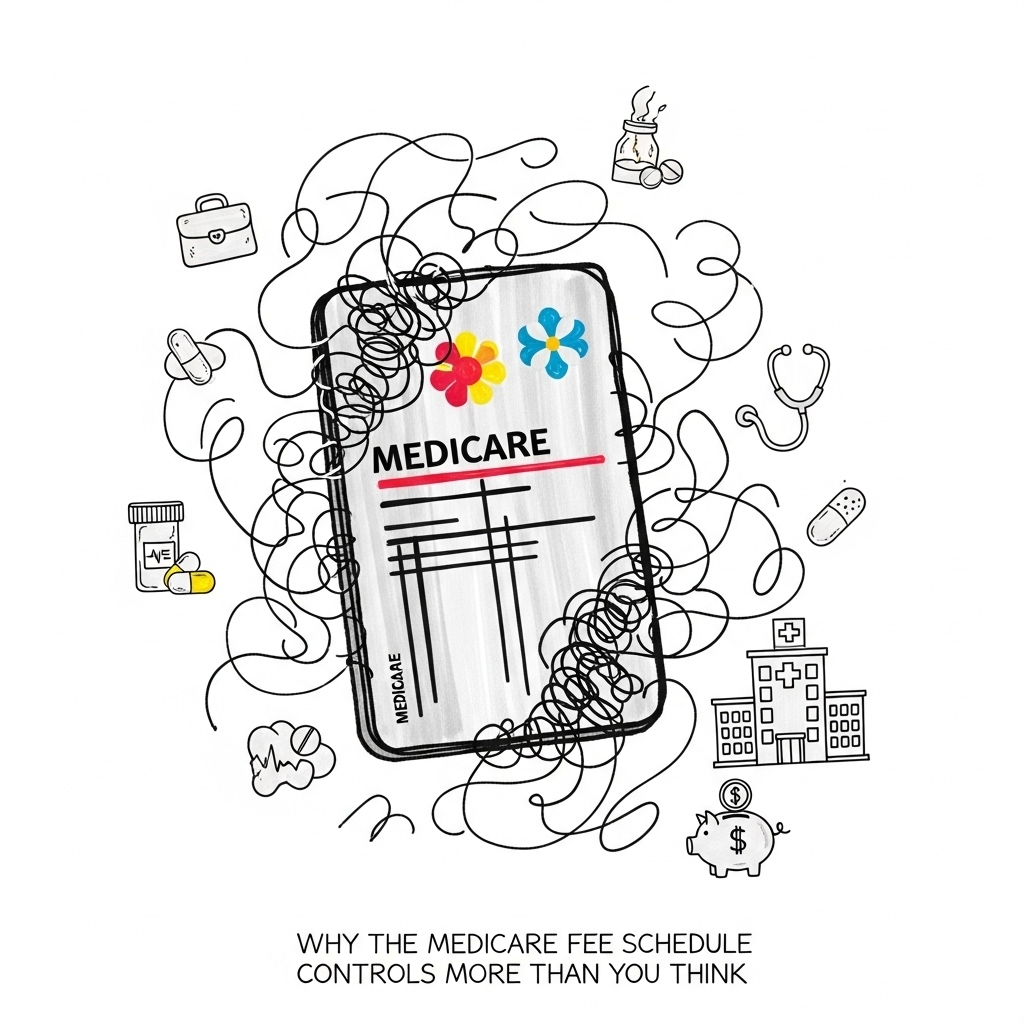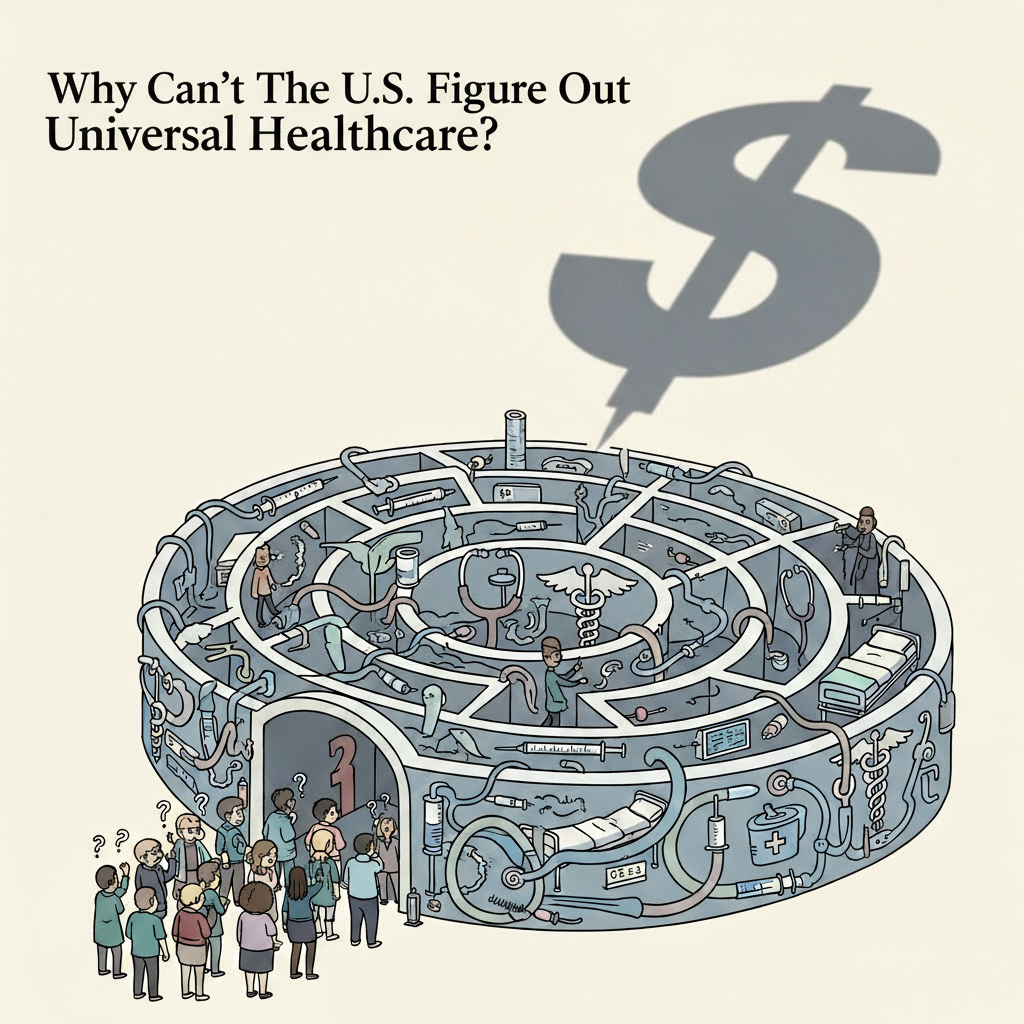Introduction: Wall Street Meets the Exam Room
Over the past decade, private equity (PE) firms have rapidly expanded their footprint in healthcare.
From urgent care centers to specialty practices, these investment groups are acquiring medical businesses with one clear goal: generate high returns within a set timeline.
The question isn’t whether private equity belongs in healthcare—it’s how its presence changes the way care is delivered.
What Is Private Equity in Healthcare?
Private equity firms pool capital from investors to buy, grow, and eventually sell businesses—typically within 3–7 years.
In healthcare, they’re targeting:
- Physician practices (dermatology, orthopedics, ophthalmology, etc.)
- Urgent care chains and walk-in clinics
- Specialty service providers like anesthesia and radiology groups
- Post-acute care facilities
Why Healthcare Attracts Private Equity
- Steady Demand – Healthcare is largely recession-proof; people need care regardless of economic conditions.
- Fragmented Market – Many specialties are still made up of small, independent practices ripe for consolidation.
- Scalability – Centralizing operations, marketing, and purchasing can boost margins.
- High Exit Potential – Selling to larger health systems or other PE firms can yield big profits.
The Promises and the Pitfalls
Most doctors lack significant liquidity and business experience early in their careers. Doctors often struggle to keep up with rapid, nuanced changes in healthcare. The image of the “rich doctor” is largely a thing of the past; in some fields, family doctors and pediatricians earn less than teachers and school administrators. Private equity firms, however, are experts at wealth creation and growth, operating with precision. Yet, their decisions are driven by financial gain, not the altruistic intentions common among healthcare providers.
Potential Benefits:
- Capital investment for technology upgrades, facility improvements, and expansion
- Professional management that can improve efficiency
- Economies of scale for purchasing and administration
Potential Risks:
- Focus on short-term profitability over long-term patient outcomes
- Cost-cutting that affects staffing and service quality
- Pressure to increase procedure volume or upsell services
- Loss of physician autonomy
The Impact on Physicians
The appealing prospect of a cash buyout, which enables the repayment of medical school debt, funding for their children’s college education, and a comfortable retirement, makes these offers difficult to decline. Even unintentional errors can lead to financial ruin for doctors and practices, as the system is inherently biased against them in favor of government and private insurance auditors. But in these acquisition models, providers beware as the devil is in the details.
Many physicians sell to PE firms for:
- Upfront financial security
- Relief from administrative burdens
- Access to better infrastructure
However, they may also face:
- Productivity quotas or revenue targets
- Changes in staffing models
- Pressure to adhere to corporate protocols over clinical judgment
The Patient Perspective
The personal touch of a small practice, driven by a genuine love of medicine and patient care, often gives way to an emphasis on new patient volume and procedural quotas. Long-time staff members, once focused solely on assisting the doctor, now juggle multiple roles and report to superiors who dictate their tasks. In this new environment, financial success and consistent growth are paramount, and the era of the traditional, benevolent doctor’s practice quickly fades.
Patients in PE-owned practices may notice:
- More standardized protocols across locations
- Possible increases in prices or new fees
- Less continuity if physician turnover increases
- Expanded access through new locations or services
Case Examples
- Urgent Care Chains – Rapid expansion fueled by PE dollars has improved access but also raised concerns about overuse of testing and imaging.
- Specialty Roll-Ups – PE-backed dermatology groups have achieved market dominance in some regions, influencing referral patterns and pricing.
Regulatory Scrutiny
The growth of PE in healthcare has caught the attention of:
- The Federal Trade Commission (FTC) – Concerned about reduced competition.
- State Attorneys General – Monitoring for unfair billing practices or patient harm.
- Congress – Holding hearings on the effects of PE ownership in healthcare.
Private equity (PE) groups typically encounter scrutiny from various state and federal regulatory bodies. However, in healthcare, these groups will face additional oversight from entities such as the DOJ, DEA, Attorneys General (AGs), Insurance Bureaus, and other watchdog organizations. The extensive and far-reaching nature of healthcare oversight and prosecutorial efforts is expected to lead to complex legal disputes.
Final Thoughts: Proceed With Eyes Open
Private equity isn’t inherently harmful—but its incentives are different from those of a physician-led practice.
When investment timelines prioritize short-term returns, patient care can be caught in the middle.
The challenge is ensuring that financial goals and clinical goals remain aligned.
Because in healthcare, profit and purpose must work together—or both will fail.
About the Author
Douglas J. Jorgensen, DO, CPC, FAAO, FACOFP
Dr. Doug is a physician, consultant, and national educator on healthcare policy and regulatory compliance. He advises providers, investors, and policymakers on balancing financial models with patient-centered outcomes.



